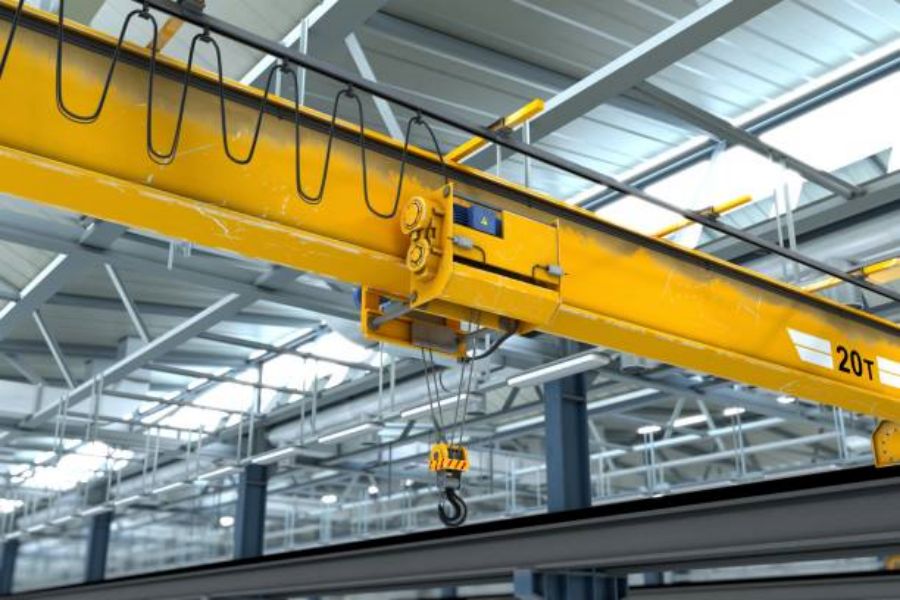1. Understanding the Basics of Crane Lifting Straps
When it comes to heavy lifting, cranes play a crucial role in various industries, such as construction, manufacturing, and logistics. One of the essential components of a crane setup is crane lifting straps. These straps are designed to securely hold and lift heavy loads, ensuring safe and efficient operations.
2. The Different Types of Crane Lifting Straps
There are several types of crane lifting straps available in the market, each designed to suit different lifting needs. The most common types include wire rope slings, chain slings, and synthetic web slings. Wire rope slings are made of durable steel cables and are ideal for heavy-duty lifting. Chain slings, on the other hand, are composed of metal chains and are known for their strength and durability. Synthetic web slings are made of synthetic fibers and are popular for their lightness and flexibility.
3. Factors to Consider When Choosing Crane Lifting Straps
When selecting crane lifting straps, several factors should be taken into account. Firstly, the weight and size of the load to be lifted must be considered to ensure that the straps have the appropriate load capacity. Secondly, the environment in which the lifting operation will take place should be assessed. Factors such as temperature, chemical exposure, and abrasion potential can affect the durability and material choice of the straps.
4. Ensuring Safety with Proper Inspection and Maintenance
Regular inspection and maintenance are crucial to ensure the safety and longevity of crane lifting straps. Before each use, the straps should be carefully inspected for any signs of wear, damage, or deformities. It is essential to follow the manufacturer's guidelines for maintenance, including cleaning and storage procedures. Additionally, training employees on proper handling and inspection techniques can help prevent accidents and extend the lifespan of the lifting straps.
5. The Advantages of Using Crane Lifting Straps
Crane lifting straps offer several advantages over alternative lifting methods. Firstly, they provide a secure and reliable way to lift heavy loads, reducing the risk of accidents and damage. Secondly, they are versatile and can be used in various lifting applications. Additionally, crane lifting straps are relatively lightweight and easy to handle, making them a convenient choice for operators. Their flexibility also allows for easier maneuverability, especially in tight spaces.
6. Proper Usage Techniques for Crane Lifting Straps
To ensure optimal performance and safety, proper usage techniques for crane lifting straps must be followed. This includes correctly attaching the straps to the load, distributing the load evenly across multiple straps, and avoiding sharp edges or abrasive surfaces that can damage the straps. It is also essential to use the appropriate hardware, such as shackles or hooks, that are compatible with the lifting straps. Following these guidelines can prevent accidents and ensure efficient lifting operations.
7. Regulations and Standards for Crane Lifting Straps
Various regulations and standards govern the use of crane lifting straps to ensure safety and quality. For example, the Occupational Safety and Health Administration (OSHA) in the United States provides guidelines and requirements for the safe use of lifting equipment, including crane lifting straps. Additionally, organizations such as the American Society of Mechanical Engineers (ASME) and the European Federation of Materials Handling (FEM) have established standards that manufacturers and users should adhere to.
8. Common Challenges and Solutions in Using Crane Lifting Straps
While crane lifting straps offer numerous benefits, there are also common challenges that users may encounter. One challenge is the potential for slippage or shifting of the load during lifting. This can be mitigated by using anti-slip pads or properly securing the load. Another challenge is the risk of abrasion or damage to the straps due to sharp edges or rough surfaces. Protective sleeves or edge guards can be used to address this issue.
9. The Role of Training and Certification in Crane Lifting Strap Usage
Proper training and certification are crucial for operators and workers involved in crane lifting operations. Training programs should cover topics such as the selection and inspection of lifting straps, proper lifting techniques, and safety procedures. Certification ensures that operators have the necessary knowledge and skills to handle crane lifting straps safely and efficiently. Regular training updates and refresher courses should also be provided to keep operators up to date with the latest industry practices.
10. The Future of Crane Lifting Straps: Advancements and Innovations
As technology continues to advance, so does the development of crane lifting straps. Innovations such as smart straps equipped with sensors and monitoring capabilities are emerging, allowing real-time tracking of load conditions, including weight distribution and strain. These advancements aim to further enhance safety, efficiency, and productivity in lifting operations. With ongoing research and development, the future of crane lifting straps looks promising.

